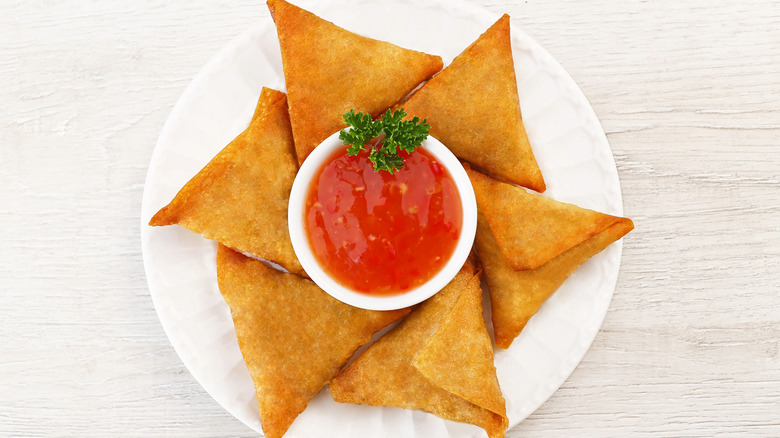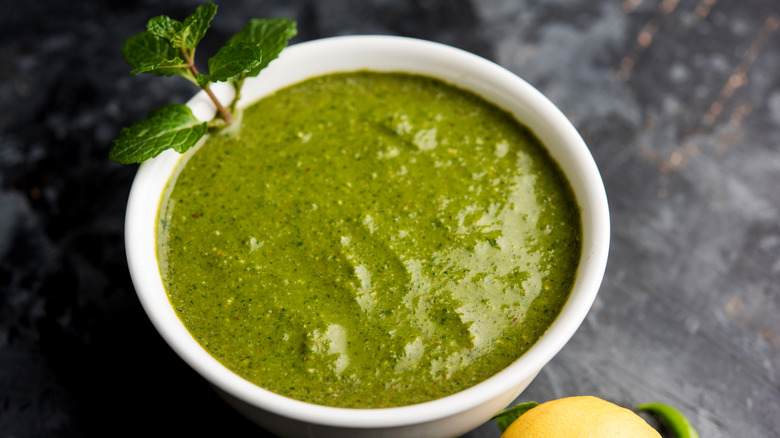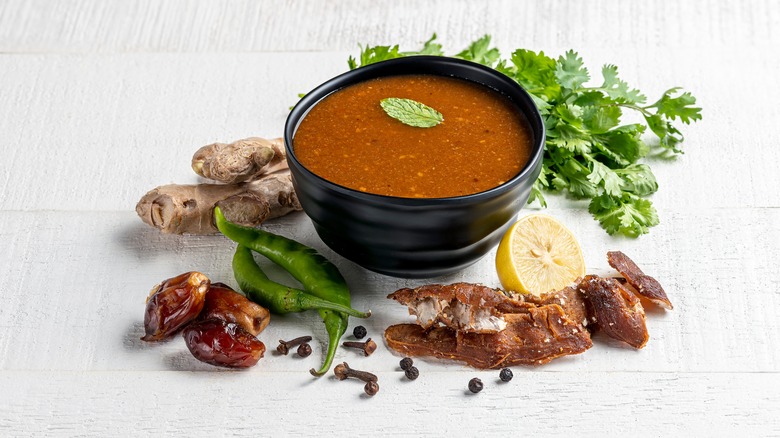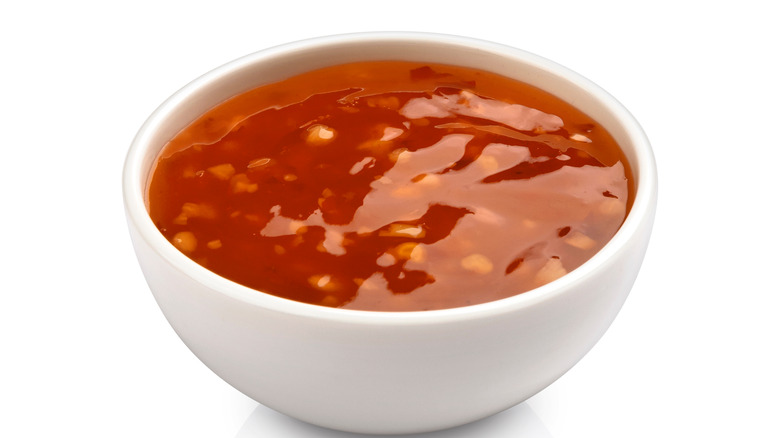The Three Types Of Sauces Commonly Served With Samosas
If you're unfamiliar, samosas are Indian fried pastries with savory fillings — such as meat or veggies, along with herbs and spices — which are typically served as an appetizer. Samosas are a staple Indian dish and quite popular amongst Indian food lovers — after all, the fillings may differ from restaurant to restaurant, catering to versatile tastes and preferences. Samosas are also easy to cook at home, which makes it even easier to choose exactly which fillings you like — Tasting Table has a simple and easy recipe for air fryer samosas, for those interested.
Additionally, anyone who has indulged in a round of samosas knows that one of the best parts of the dish is the variety of sauces that pair well with the savory pastries. While samosas pair well with a number of sauces, there are three specific types that are most commonly served with the dish: a green sauce, a brown sauce, and a red sauce.
What is the green sauce?
The green sauce is cilantro chutney, sometimes referred to as "hari chutney" (which derives from "hara," the Hindi word for "green"). The chutney prominently includes cilantro, which gives it a bright green color. Additionally, a common variation of the green sauce also includes another green ingredient: mint. Besides the cilantro and mint, the green sauce also typically includes green chilis, garlic, lime or tamarind juice, ginger, white vinegar, roasted cumin powder sugar, and salt. There are different variations of the recipe, which each include some combination of these ingredients.
As for the taste of cilantro chutney, you can expect a combination of tanginess and spiciness — plus, with the addition of mint, there will also be undertones of a cool flavor. There are a few variations of the cilantro chutney, the most common being a version that integrates yogurt to make it creamier and less spicy. If you are interested in making this chutney yourself, it easily comes together by blending up the ingredients.
While the cilantro mint chutney can easily pair well with any samosa, it is especially complimentary to the aloo samosa (which is filled with spiced potatoes and peas).
What is the brown sauce?
The brown sauce is a tamarind chutney, also sometimes referred to as imli chutney, which is cooked on the stovetop then cooled and strained for serving. Tamarind chutney is made primarily from tamarind paste and also includes ingredients such as fennel seeds, ginger, cayenne, and garam masala (an aromatic spice blend used often in Indian cooking). Another key component is the sugar; this chutney typically uses either coconut sugar or jaggery sugar, the latter of which is a type of sugar commonly used in Southeast Asia and Africa that has a high level of molasses. If you're making the chutney at home and can't find jaggery or coconut sugar in stores, then brown sugar would be the most suitable replacement.
Tamarind chutney is the perfect sauce if you're looking for a take on the sweet and sour sauce. It perfectly blends the two using the tanginess of tamarind and the sweetness of the sugar. There is also some spiciness mixed in there from the small amount of cayenne — if you're making this at home, you can adjust the amount of cayenne to meet your preferences for heat.
Because the two prominent tastes of this chutney are sweet and sour, it would pair well with any samosa that is spicy, which often includes aloo samosas, to balance everything out.
What is the red sauce?
The red sauce is a garlic chutney, which gets its coloring from the abundance of red chilis (either whole or in powder form) included in the recipe — one batch typically calls for about 25 red chilis. Along with red chilis and, of course, garlic, the chutney also calls for ingredients such as cumin seeds or powder, sugar (typically jaggery), and lemon juice. Like the cilantro chutney, garlic chutney is made in the blender — no cooking on the stovetop is necessary.
If it wasn't clear from the fact that a whole lot of red chilis are needed for this sauce, the garlic chutney is very spicy and hot. Unlike the other chutneys, there isn't a ton of sweetness in the flavor — although the sugar does bring in some undertones, the most dominant taste here is spice. Of course, if you're making this at home, you have the benefit of picking out your own ingredients, so you can opt for chilis with less heat.
The garlic chutney pairs well with just about any samosa if you want to add an extra spice kick.



